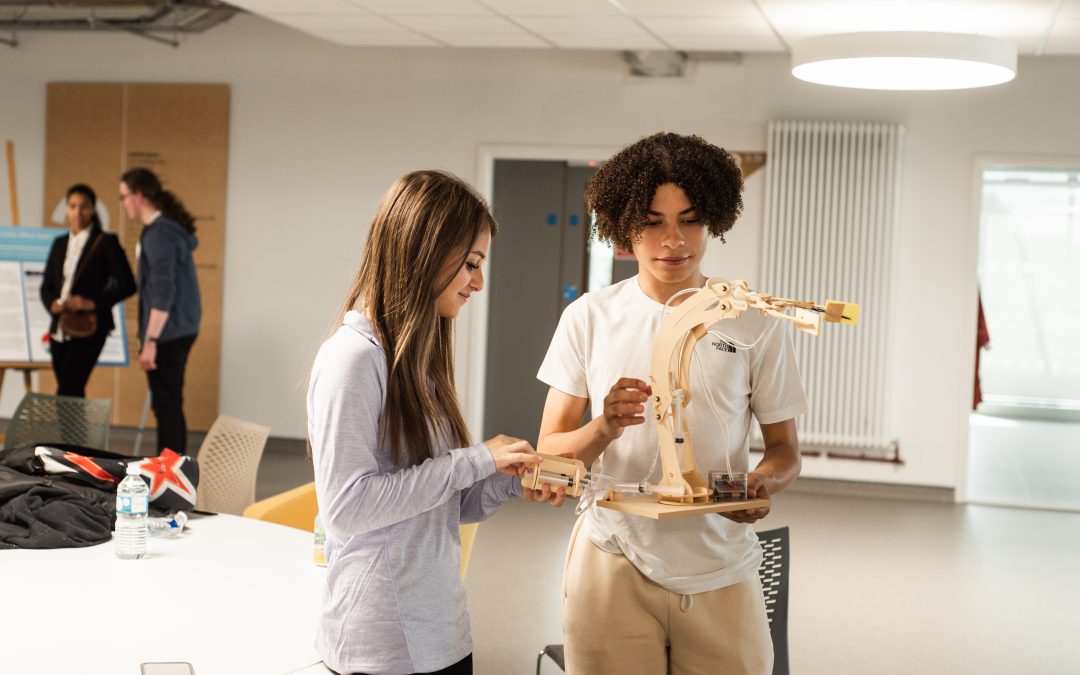Written by Dr Agnieszka J. Gordon and Finley I. Lawson.
The British Science week seems a perfect opportunity to write about some STEM related activities, performed by our talented multidisciplinary team at the LASAR Research Centre at Canterbury Christ Church University. The aim is to inspire young people to fall in love with STEM, and to encourage STEM professionals to be actively involved in inspiring future generations. Science, Technology, Engineering, and Mathematics (STEM) are fields that move our society forward and are central to tackling problems we, as a society, face everyday
The LASAR team combines talents to work across disciplines and create multidisciplinary and cross-industry projects to inspire future generations along the STEM pipeline and equip non-scientists to make sense of science in their everyday lives. Our STEM engagement activities are underpinned by epistemic insight pedagogy, (www.epistemicinsight.com). Epistemic insight enables students to develop their understanding of the distinctiveness of different scientific (and other) disciplines and how they interact with each other. This builds epistemic agents who can confidently interrogate the nature of knowledge and understand the importance of context for STEM-led solutions to real world issues like sustainability, or the interaction(s) between science and art conservation. Our activities build science capital and STEM-identity across diverse groups, inspiring young people to consider STEM and STEM-related careers, by working directly with them, and providing teacher educators and educational settings with resources.
The recent interdisciplinary project “Power of Light”, funded by STFC, involved a collaboration between research scientists, outreach professionals, STEM Ambassadors and science teachers. We co-created resources for Primary schools exploring multidisciplinary research carried out at the Diamond Light Source. The project translated current research into age-appropriate, and curriculum-linked interactive resources, and aimed to inspire children to consider STEM careers, including interdisciplinary opportunities that combine science with non-science disciplines. You can see the animation here (Diamond Light Source animation). The animation was supported by three short magazines (‘zines’), with each zine exploring a bridging question that linked science and another discipline. An example was research related to preserving Mary Rose ship (Chadwick et al, 2011; The Mary Rose flagship). The project directly reached over 500 students in 10 schools with 23 teachers, with further impact achieved through collaboration with the University of Kent and Discovery Planet CIC (www.discoveryplanet.co.uk). All three zines can be downloaded from the Diamond Lightsource website here: The Power of Light Zine Project – – Diamond Light Source
LASAR has also developed a research partnership with the School and College Engagement Team at Christ Church University, highlighting the importance of sustained engagement with STEM in interdisciplinary and real-world contexts. By placing STEM in real-world contexts, traditionally underrepresented groups of young people are able to develop their STEM-identity and aspirations. This engagement with STEM broadens their understanding of STEM careers beyond the stereotype of working in a laboratory. The impact of this work on raising both aspiration and attainment was recognised in 2022 when the Inspiring Minds team won the NEON Widening Access Initiative (Outreach) Award. The next steps for the programme are to secure industry partners for individual cohorts of 75 students to offer bespoke STEM programmes based in Epistemic Insight (for more information on the Inspiring Minds programme see www.canterbury.ac.uk/inspiring-minds)
There is no doubt that engaging young people in interactive, and contextualised STEM activities helps to instigate passion for STEM. Research has shown that this is most effective when students have sustained contact with STEM opportunities, role models, and industry across their educational life cycle, not just when making career choices. Collaboration with research scientists and industry professionals helps to place activities in a real context, highlighting the relevance and cooperation involved in STEM. By providing multidisciplinary STEM activities young people who are disengaged from STEM can find new ways to (re-)engage via Big Questions, and with links to humanities and social science. Epistemic Insight highlights the nature of STEM and shows the importance of its dialogue with wider perspectives, necessary for today’s societal and global issues. The collaboration between academic and industry partners is not only beneficial to the students, but also enables participating experts to develop outreach skills and translate their research in a way that is understood by students, teachers and wider society. It is fulfilling for all involved to see the genuine impact these collaborations can have on the participants and inspiring to see students’ enjoyment and engagement during the workshops. Interactive, interdisciplinary opportunities enable young people to apply their existing knowledge to practical STEM challenges and helps them to gain a new perspective on what STEM is really about, how it is applied, and how STEM professionals really work.
References
Chadwick, A., Berko, A., Schofield, E., Jones, A., Frederick, J., Mosselmans, W. and Smith, A. (2011) “How X-rays are helping defeat the effects of micro-organisms in the preservation of Mary Rose”, Actualite Chimique, pp. 106-108.
Discovery Planet CIC, www.discoveryplanet.co.uk
Epistemic Insight Initiative, www.epistemicinsight.com
Power of Light Animation, EI STFC Power of Light Diamond Light Source animation – YouTube
The Mary Rose, The Mary Rose – flagship of Henry VIII | The Mary Rose
The NEON awards, NEON Awards 2022 – NEON (educationopportunities.co.uk)
Photo credit: J. Peilow

